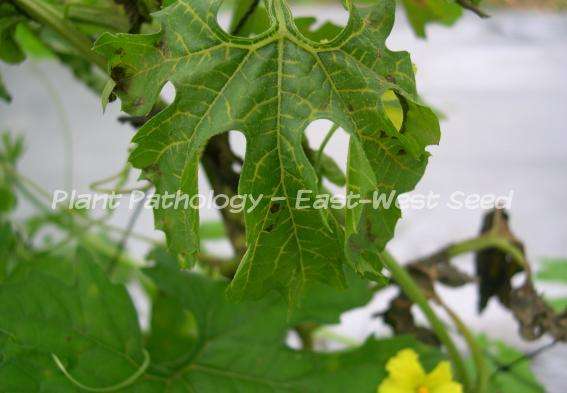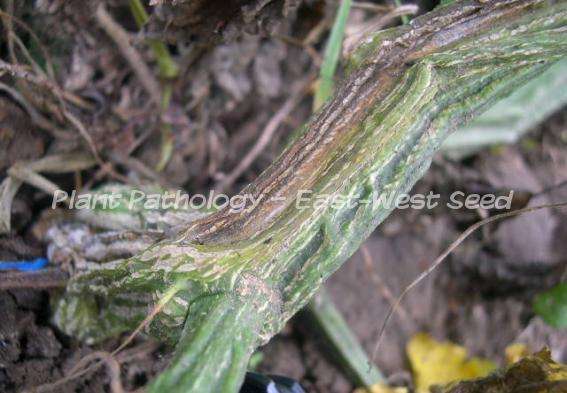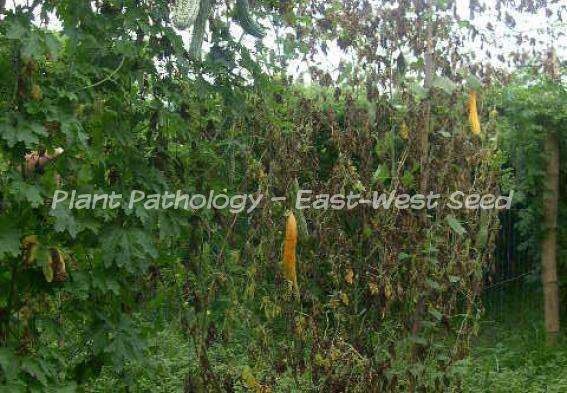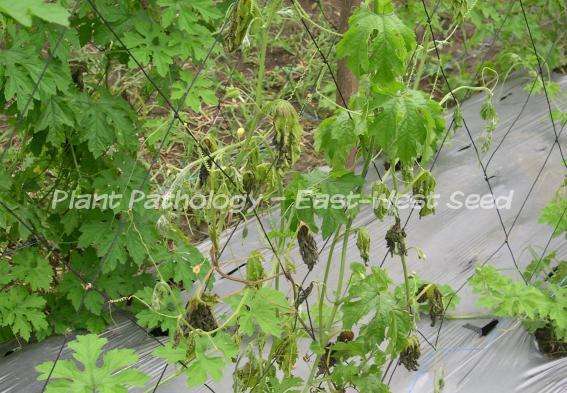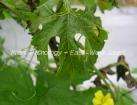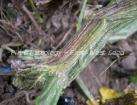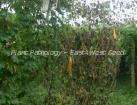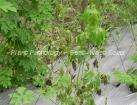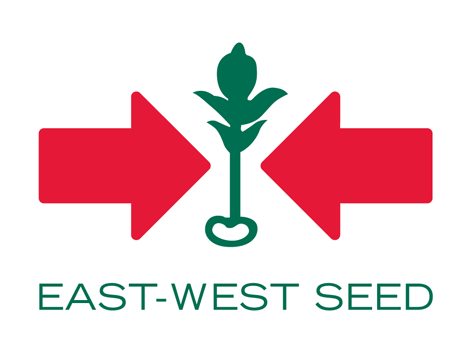Causal Agent:
Fungus (Fusarium oxysporum f.sp. momordicae)
| Characteristic Symptoms: | |
 |
Affected plants show yellowing of leaf veins and wilting. |
 |
Vascular discoloration of infected stem and roots are important diagnostic symptoms. |
 |
One-sided wilt may also occur. |
| Conditions for Disease Development: | |
 |
The pathogen is soil-borne and is host-specific (i.e., infects only bittergourd). |
 |
The pathogen is disseminated primarily by movement of infested soil and plant debris.
|
 |
Infection occurs through the root, primarily in the area of elongation, and is aided by wounds created by insect/nematode feeding.
|
 |
The disease is most severe in light, sandy, slightly acidic soils (pH 5.0-6.0) with low to moderate soil moisture.
|
 |
Optimum soil temperature for disease development is at 20-27°C.
|
 |
The pathogen may be seed-borne.
|
| Management and Control: | |
 |
Avoid planting in contaminated land or area with previous history of high FW incidence or do not plant bittergourd on the same area for a minimum of 5-7 years.
|
 |
Remove wilted plants including roots as soon as symptoms are observed to minimize spread of disease.
|
 |
Control root-knot nematode and root-feeding insects since they may help in disease establishment and spread.
|
 |
Use resistant/moderately resistant varieties, if available.
|
 |
Use resistant rootstock in grafted seedlings.
|
 |
Increase the soil pH by liming and reduce nitrogen level in the soil.
|
 |
Biofumigation of soil using chopped mustard leaves can help reduce inoculum level in the soil.
|
| References: | |
| Compendium of Cucurbit Diseases (1996) by the American Phytopathological Society | |
To view other diseases, click here.
Need more help? Ask the Doctor.



